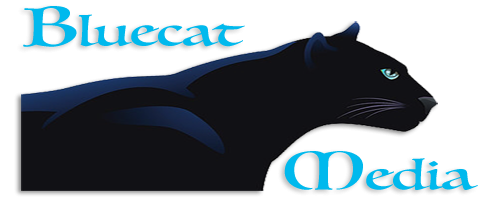– AN ORWELLIAN DYSTOPIAN NIGHTMARE? OR THE ONLY WAY TO AVOID CATASTROPHE?
by Allan Ewart – Bluecat Media 6-June, 2020
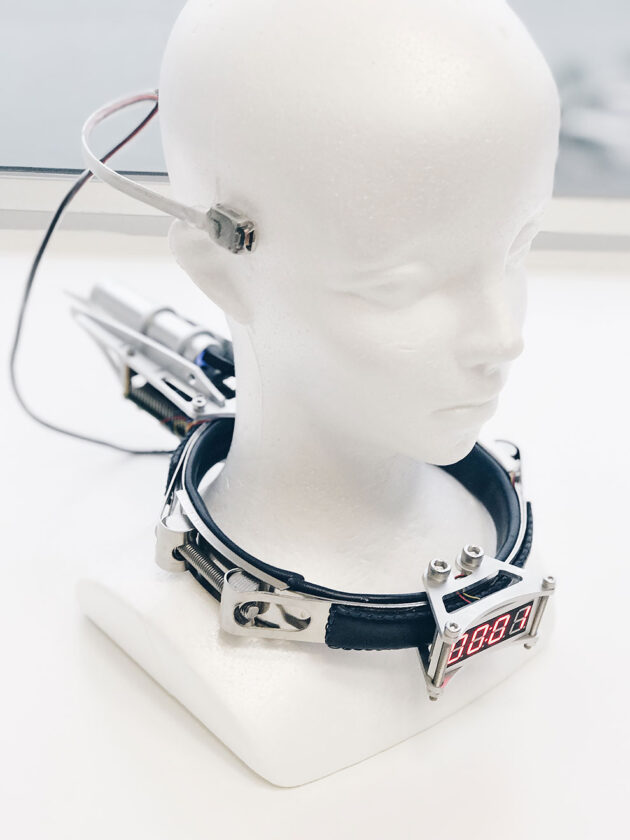
It’s one of those rare moments when you literally spit your coffee out as a reaction to your latest discovery of one of the most preposterous notions imaginable. Then again, these days very little surprises me, I kind of half expect some news bulletin to announce the arrival of a contingent of alien clams from the moon.
Meet the High Tech Panopticon Universal “Freedom Tag” – a surveillance necklace designed to be fitted around every citizen’s neck loaded with cameras and microphones to monitor our every move. Sounds like science fiction, right? As you’ll soon discover this could be much closer to reality than you might think.
Bilderberg Meeting – Switzerland 2019

Having decided to revisit the participant list of the latest Bilderberg Group Meeting, which took place about a year ago on 30 May – 2 June 2019 in Montreux, Switzerland, in an attempt to search for a deeper understanding of current events, one attendee intrigued me enough to warrant further investigation. To my surprise, this was about to lead me down yet another tunnel branch inside the rabbit hole. The Bilderberg participant was Nick Bostrom, Director of the Future of Humanity Institute, Oxford University (see below, highlighted in blue).
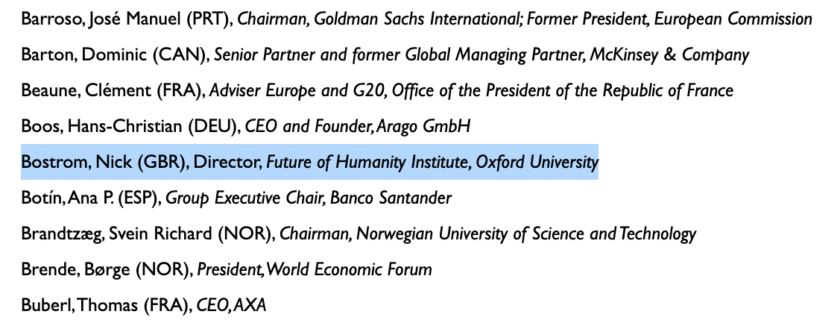
Rather than particular names, I was scanning the list of companies and organisations that were represented at the Bilderberg meeting, and it was Oxford University that caught my eye. So, what’s significant about the ‘Future of Humanity Institute’ at Oxford University?
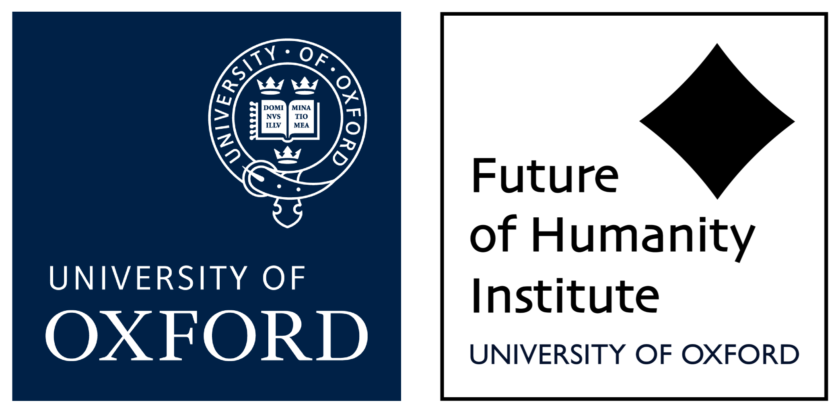
The following is from the fhi website:
About
The Future of Humanity Institute is a unique world-leading research centre that works on big picture questions for human civilisation and explores what can be done now to ensure a flourishing long-term future. Its multidisciplinary research team includes several of the world’s most brilliant and famous minds working in this area. Its work spans the disciplines of mathematics, philosophy, computer science, engineering, ethics, economics, and political science.
FHI has originated or played a pioneering role in developing many of the key concepts that shape current thinking about humanity’s future. These include: simulation argument, existential risk (emphasis mine), nanotechnology, information hazards, strategy and analysis related to machine superintelligence, astronomical waste, the ethics of digital minds, crucial considerations, observation selection effects in cosmology and other contexts of self-locating belief, prediction markets, infinitarian paralysis, brain emulation scenarios, human enhancement, the unilateralist’s curse, the parliamentary model of decision making under normative uncertainty, the vulnerable world hypothesis (emphasis mine), and many others.
Current research groups include:
MACROSTRATEGY: Explores how long-term outcomes for humanity may be connected to present-day actions, and searches for crucial considerations.
CENTRE FOR THE GOVERNANCE OF AI: Studies how geopolitics, governance structures, and strategic trends will affect the development of advanced artificial intelligence.
TECHNICAL AI SAFETY: Develops techniques for building artificially intelligent systems that are safe and aligned with human values, in close collaboration with leading AI labs such as DeepMind, OpenAI, and CHAI.
BIOSECURITY: Focuses on developments in biotechnology that could alter fundamental parameters of the human condition (including techniques that raise biosecurity concerns and methods for human enhancement and modification).
Funding
It’s worth noting that the Future of Humanity Institute was recently awarded significant funding of £13.3m from the Open Philanthropy Project, which was founded by husband and wife team Cari Tuna and Dustin Moskovitz (co-founder of Facebook along with Mark Zuckerberg).

According to the website announcement, this funding round from the Open Philanthropy project was the largest in the Oxford Faculty of Philosophy’s history.
So now that we have some background, we now turn to the subject alluded to in the title of this article – The Freedom Tag.
Professor Nick Bostrom wrote a paper for the institute published in November 2019 titled:
The Vulnerable World Hypothesis (2019)
In his Vulnerable World Hypothesis (VWH), Professor Bostrom postulates that humanity has the potential to bring about its own destruction as a result of either unintentional consequence from technological advancement, or intentionally by individuals with criminal intent. In his paper he presents potential scenarios or ‘Black Ball” events as he calls them, that could potentially lead to the total (or partial) destruction of civilisation.
Example scenarios put forward include a Nuclear holocaust, the accidental triggering of the Earth’s atmosphere catching fire, or a biological attack. The likelihood of events occurring, it is stipulated, is dependent on the ease to which they can be initiated. For example, if it were easy for an individual to create a basic nuclear weapon in their kitchen in an afternoon, then the likelihood of this resulting in catastrophe would greatly increase due to more individuals having the potential to do this. Fortunately for humanity, producing a nuclear weapon is extremely difficult, thus it is less likely to happen.
Bostrom uses the analogy of an urn filled with balls coloured white, grey or black. Every now and again civilisation reaches in to the urn and pulls out a ball. If the ball is white then this is an event, discovery or technological advancement that benefits humanity, if it is grey it might have the potential for adverse consequences, or if the ball is black, this could lead to total destruction. Bostrom states that so far humanity has been lucky not to have pulled a black ball out of the urn. However, it may only be a matter of time until we do, unless of course we take certain actions to avert disaster.
The Solution
Note that the number one key topic for discussion at the 2019 Bilderberg group meeting is stated on the website as:
1. A Stable Strategic Order
It is perhaps poignant to note then, that the Bilderberg meeting was held in May / June 2019, and Professor Bostrom subsequently published his paper in November 2019 wherein he mentions the following:
Quoting from the brief synopsis in the introduction to the research article, Bostrom states:
A general ability to stabilize a vulnerable world would require greatly amplified capacities for preventive policing and global governance. The vulnerable world hypothesis thus offers a new perspective from which to evaluate the risk-benefit balance of developments towards ubiquitous surveillance or a unipolar world order.

This is not necessarily proof positive that the content of Professor Bostrom’s paper was specifically discussed at the Bilderberg meeting. It is unlikely we will ever know this for sure because the meetings are subject to ‘Chatham House Rules” which means that whatever is discussed is never to be disclosed outside of the meetings.
The solution proffered by Bostrom, to effectively address the problem of the “truth of the Vulnerable World Hypothesis” – to prevent catastrophe and to achieve stabilisation is two-fold including:
- Preventative Policing via Comprehensive Surveillance
- Global Governance
Create the capacity for strong global governance. Develop the inter-state governance capacity needed to reliably solve the most serious global commons problems and ensure robust cooperation between states (and other strong organizations) wherever vital security interests are at stake – even where there are very strong incentives to defect from agreements or refuse to sign on in the first place.
Quoting from the research article pertaining to the paper, we focus on the first solution item – Preventative Policing, as follows:
For a picture of what a really intensive level of surveillance could look like, consider the following vignette:
High-tech Panopticon
Everybody is fitted with a ‘freedom tag’ – a sequent to the more limited wearable surveillance devices familiar today, such as the ankle tag used in several countries as a prison alternative, the bodycams worn by many police forces, the pocket trackers and wristbands that some parents use to keep track of their children, and, of course, the ubiquitous cell phone (which has been characterized as ‘a personal tracking device that can also be used to make calls).
The freedom tag is a slightly more advanced appliance, worn around the neck and bedecked with multidirectional cameras and microphones. Encrypted video and audio is continuously uploaded from the device to the cloud and machine-interpreted in real time. AI algorithms classify the activities of the wearer, his hand movements, nearby objects, and other situational cues.
If suspicious activity is detected, the feed is relayed to one of several patriot monitoring stations. These are vast office complexes, staffed 24/7. There, a freedom officer reviews the video feed on several screens and listens to the audio in head- phones. The freedom officer then determines an appropriate action, such as contacting the tag- wearer via an audio link to ask for explanations or to request a better view. The freedom officer can also dispatch an inspector, a police rapid response unit, or a drone to investigate further. In the small fraction of cases where the wearer refuses to desist from the proscribed activity after repeated warnings, an arrest may be made or other suitable penalties imposed. Citizens are not permitted to remove the freedom tag, except while they are in environments that have been outfitted with adequate external sensors (which however includes most indoor environments and motor vehicles).
The system offers fairly sophisticated privacy protections, such as automated blurring of intimate body parts, and it provides the option to redact identity-revealing data such as faces and name tags and release it only when the information is needed for an investigation. Both AI-enabled mechanisms and human oversight closely monitor all the actions of the freedom officers to prevent abuse.
Creating and operating the High-tech Panopticon would require substantial investment, but thanks to the falling price of cameras, data transmission, storage, and computing, and the rapid advances in AI-enabled content analysis, it may soon become both technologically feasible and afford- able. For example, if the cost of applying this to one individual for 1 year falls to around US$140, then the entire world population could be continuously monitored at a cost of less than 1 per cent of world GDP. At that price, the system would plausibly represent a net saving – even setting aside its use in preventing civilization-scale cataclysms – because of its utility for regular law enforcement. If the system works as advertised, many forms of crime could be nearly eliminated, with concomitant reductions in costs of policing, courts, prisons, and other security systems. It might also generate growth in many beneficial cultural practices that are currently inhibited by a lack of social trust.
If the technical barriers to High-tech Panopticon are rapidly coming down, how about its political feasibility? One possibility is that society gradually drifts towards total social transparency even absent any big shock to the system. It may simply become progressively easier to collect and analyse information about people and objects, and it may prove quite convenient to allow that to be done, to the point where eventually something close to full surveillance becomes a reality – close enough that with just one more turn of the screw it can be turned into High-tech Panopticon.
An alternative possibility is that some particular Type- 1 vulnerability comes sufficiently starkly into view to scare states into taking extreme measures, such as launching a crash program to create universal surveillance. Other extreme measures that could be attempted in the absence of a fully universal monitoring system might include adopting a policy of preemptive incarceration, say whenever some set of unreliable indicators suggest a greater than 1 per cent probability that some individual will attempt a city-destroying act or worse.
Political attitudes to such policies would depend on many factors, including cultural traditions and norms about privacy and social control; but they would also depend on how clearly the civilisational vulnerability was perceived. At least in the case of vulnerabilities for which there are several spectacular warning shots, it is plausible that the risk would be perceived very clearly. In the ‘easy nukes’ scenario, for example, after the ruination of a few great cities, there would likely be strong public support for a policy, which, for the sake of forestalling another attack, would involve incarcerating a hundred innocent people for every genuine plotter. In such a scenario, the creation of a High-tech Panopticon would probably be widely supported as an overwhelmingly urgent priority. However, for vulnerabilities not preceded or accompanied by such incontrovertible evidence, the will to robust preventive action may never materialise.
© 2019 The Authors. Global Policy published by Durham University and John Wiley & Sons Ltd. This is an open access article under the terms of the Creative Commons Attribution-NonCommercial License, which permits use, distribution and reproduction in any medium, provided the original work is properly cited and is not used for commercial purposes.
Conclusion
It’s a mind blowing prospect that, according to Professor Bostrom, there could be around 7,000 or more (one in a million) people on this planet who harbour apocalyptic designs on our human civilisation. On the other hand, I find the spectre of the entire human population being completely subjugated, controlled monitored and surveilled 24/ 7 under an Orwellian totalitarian dystopia just as foreboding. Not to mention the possibility of some nuclear, biological or technological accident triggering a mass extinction level event, we are clearly living in extremely precarious times.
To be fair to Professor Bostrom, his paper does offer a balanced view for discussion and does not necessarily appear to be advocating for the introduction of full-blown totalitarian surveillance. He does offer possible limited solutions surrounding the points raised in the scenarios for further discussion and consideration, and alludes to the notion that a totalitarian dystopia is not particularly desirable for a number of obvious reasons.
The paper does however indulge the conspiracy minded by perhaps providing at least one possible reason for a pandemic exercise such as the one we are experiencing now. And it is also interesting from the perspective of postulating a reason to bring about global governance in a new “stable” unipolar world order. It’s my guess that these scenarios must have been discussed to some degree at the Bilderberg meeting, but that can only ever be mere speculation on my part.
One other particularly notable participant who attended the same Bilderberg meeting in 2019, was U.S. Secretary of State, Mike Pompeo, who recently stated at a live presser on the “pandemic” that “we are in a live exercise”.
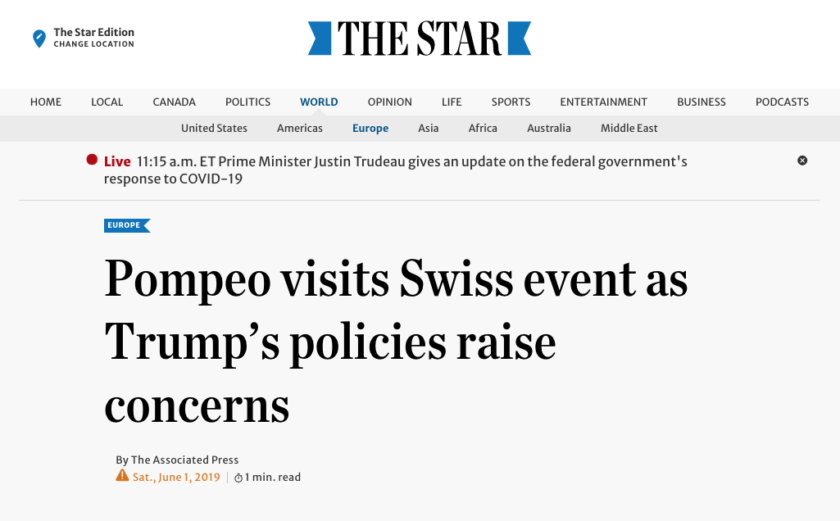

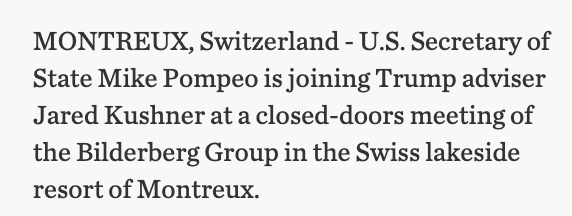
One has to wonder therefore, if this is indeed such an exercise scenario in preparation to test a response to a genuine potential existential black ball threat event? Or could it simply be a methodology to bring about unipolar world governance encompassing total control of the entire global population via the universal implementation of extreme surveillance monitoring measures such as that offered by the high tech panopticon ‘Freedom Tag’ necklace?
Links & Sources
The Bilderberg Group
https://www.bilderbergmeetings.org/meetings/meeting-2019/press-release-2019
List of Participants
https://www.bilderbergmeetings.org/press/press-release/participants
Future of Humanity Institute
https://www.fhi.ox.ac.uk/
FHI Research Areas
https://www.fhi.ox.ac.uk/research/research-areas/
FHI Funding Grant Announcement
https://www.fhi.ox.ac.uk/grant-announcement/
The Vulnerable World Hypothesis Research Paper
https://www.nickbostrom.com/papers/vulnerable.pdf
Open Philanthropy Project
https://www.openphilanthropy.org/
Open Philanthropy Project – Funding Global Health – Barron’s article
https://www.barrons.com/articles/open-philanthropy-projects-cari-tuna-on-funding-global- health-51569261600
The Star Article on Pompeo Visit to Bilderberg 2019
https://www.thestar.com/news/world/europe/2019/06/01/pompeo-visits-swiss-event-as- trumps-policies-raise-concerns.html
AG COLLAR by XCEED
http://www.xceed.hk/work/collar-ag/
https://designyoutrust.com/2017/06/collar-ag-a-wearable-device-for- surveillance-by-xceed/
